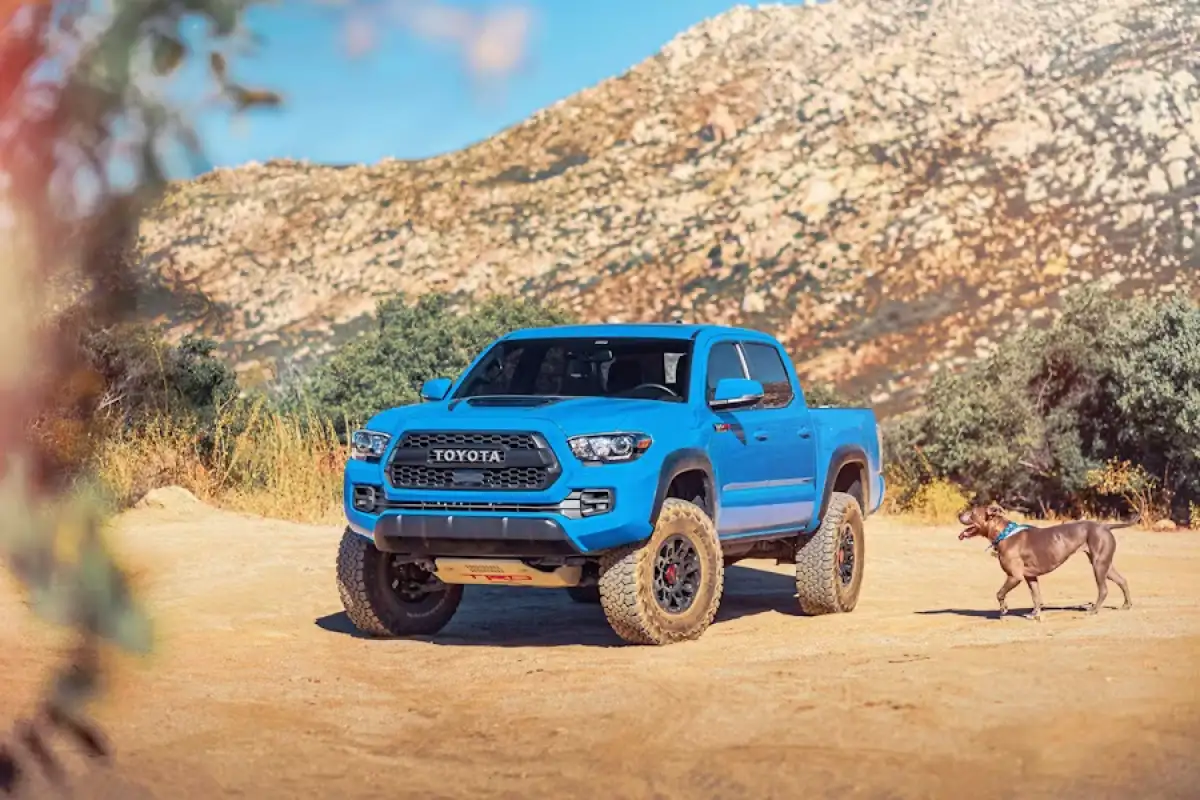The Toyota Rush discontinued news has caught the attention of many car enthusiasts and owners alike. If you’ve been wondering about the fate of the Toyota Rush and its impact on your daily driving, you're in the right place. Dive into this guide to unravel the reasons behind its halt and find out what you can do next.
What to Do If You Own a Toyota Rush

If you own a Toyota Rush, it’s important to stay ahead on maintenance and service plans despite the model being discontinued. Here’s how you can safeguard your investment:
3 Immediate Steps for Current Owners
Confirm Your Warranty Coverage:Review your vehicle’s warranty documents to see if your model, particularly those from 2022 to 2024, still falls under Toyota’s 5-year service package. This step ensures that you have a clear understanding of your service rights while spare parts remain widely available.
Locate Certified Service Centers:Use Toyota’s service locator or local provider listings to identify authorized repair centers in your area, such as those near prominent hubs like Dubai or Riyadh. This provides the reassurance that your vehicle receives professional care, even as production has ceased.
Engage with Local Owner Networks:Join regional Toyota Rush owner groups, which are helpful for exchanging maintenance tips and even sourcing spare parts. These communities often share updates on aftermarket support and can be a lifeline for troubleshooting challenges.
Maintenance Checklist for Older Models
Keeping your Toyota Rush in prime running condition requires regular upkeep. Here’s a simple table outlining key components and suggested service intervals:
Component | Recommended Service Interval |
|---|---|
Timing Belt | Every 80,000 km |
Air Filters | Annually or every 15,000 km |
Suspension | Inspection every 3 years |
Sticking to these intervals can help you avoid unexpected breakdowns, ensuring that your vehicle remains reliable even after production has halted.
Why Toyota Stopped Rush Production

The decision to discontinue the Toyota Rush was influenced by multiple factors tailored to meet evolving GCC standards and buyer needs.
Changing GCC Safety Standards
The Toyota Rush was unable to meet the updated 2025 GCC pedestrian protection requirements, which emphasize improved safety for both drivers and pedestrians.
The model also lagged behind in integrating advanced driver assistance systems such as autonomous emergency braking (AEB), making it less competitive in safety technology.
Market Shift Towards Electrification
With global trends leaning towards eco-friendly mobility, the Toyota Rush’s 1.5L engine struggled to align with the stricter emission standards now mandatory in the GCC region.
A significant number of buyers, around 78% in key markets like the UAE, are favoring hybrid and electric alternatives, prompting Toyota to rethink its compact SUV lineup.
Top 2025 Alternatives to Consider

As the Toyota Rush steps aside, several alternatives are emerging in the market, offering a blend of eco-efficiency and modern tech features.
Toyota’s New Compact SUV Lineup
Toyota Raize Hybrid
Offers approximately 35% better fuel efficiency compared to traditional engines.
Features a 5-seater layout with advanced driver assistance systems (ADAS) to meet new safety standards.
Corolla Cross
Provides flexible seating arrangements, including a 7-seater option for larger families.
Comes with a robust 10-year battery warranty, highlighting its commitment to long-term sustainability.
Below is a brief comparison table to help you decide:
Feature | Toyota Rush (Discontinued) | Toyota Raize Hybrid | Corolla Cross |
|---|---|---|---|
Seating Capacity | 7 | 5 | Up to 7 |
Safety Features | Basic | ADAS | Enhanced |
Emission Compliance | Outdated | Hybrid compliant | Hybrid compliant |
Popular Pre-Owned Options
For those leaning towards the pre-owned market, consider:
2022 Rush GX:Priced around AED 65,000 to SAR 65,000 up to AED 75,000/SAR 75,000.
Mitsubishi Xpander Cross:A compelling alternative with new models around AED 78,000/SAR 78,000.
Secondhand Market Outlook

Even though production has ceased, the secondhand market remains active, albeit with challenges to keep in mind:
Current Resale Values
2020 models are typically valued at about AED 55,000/SAR 55,000, marking an 18% depreciation compared to 2023 values.
2023 models now fetch approximately AED 82,000/SAR 82,000, reflecting a smaller drop of around 9% since the discontinuation announcement.
Spare Parts and Repair Support
Genuine spare parts for the Toyota Rush are guaranteed to be available until at least 2030, ensuring service reliability for the next decade.
Aftermarket support is expected to continue well until 2035, giving you ample time to plan any major upgrades or repairs.
FAQ

Q1:When was the Toyota Rush officially discontinued?
The Toyota Rush was officially discontinued in 2025, aligning with newer safety requirements and market demands. This move was part of Toyota’s strategic shift towards more eco-friendly and technologically advanced models in the GCC region. Many local drivers have expressed concerns about the availability of spare parts and maintenance support after discontinuation. If you own one, it's essential to follow the outlined maintenance and service tips to keep your vehicle in good condition.
Q2:What are the main reasons behind the discontinuation of the Toyota Rush?
The primary reasons include its inability to meet the updated GCC safety standards, particularly in pedestrian protection and driver assistance systems like autonomous emergency braking. Additionally, the shift in consumer demand toward hybrid and electric vehicles played a significant role. The 1.5L engine could no longer compete with emerging eco-friendly alternatives. This discontinuation reflects a broader trend in the region towards sustainable mobility.
Q3:Are there reliable alternatives available if I want a similar compact SUV?
Yes, Toyota has introduced alternatives such as the Toyota Raize Hybrid and the Corolla Cross, which are designed to meet modern GCC safety and emission standards. The Raize Hybrid brings improved fuel efficiency and advanced driver assistance, while the Corolla Cross offers flexible seating and a long-term battery warranty. These models are well-suited for drivers seeking both reliability and modern tech features.
Q4:How will the discontinuation affect the Toyota Rush’s resale value and spare parts availability?
Resale values might see a gradual decline due to the model's discontinuation, with older models depreciating faster. However, the resale market remains robust, with used models still attracting buyers due to their affordability. Genuine spare parts are secured until 2030, and aftermarket support is expected until 2035. It is wise to regularly check with local service centers for any updates on parts availability.
Q5:What steps should new buyers consider if interested in a discontinued model?
New buyers should thoroughly research the vehicle’s long-term service prospects and join regional fan communities to gain insights and maintenance tips. It’s crucial to evaluate whether the benefits of a well-maintained used Toyota Rush outweigh the potential challenges in spare parts availability later on. Additionally, comparing the Rush with emerging alternatives like the Toyota Raize Hybrid can help make an informed decision.
This article is for reference only, please follow the latest local laws and regulations.
Read More:
How to Check American Car Accident History in UAE:2025 Buyer's Guide
How to Check Original KM in a Car in UAE:2025 Buyer’s Guide
How Much Air Pressure in Car Tires? 2025’s Guide for Safe Driving

Mustafa Karim, having been deeply involved in automotive research and development for over ten years. He is fond of Japanese cars, and their precise and energy-efficient features have influenced him. In his spare time, he loves Japanese anime and kendo, drawing inspiration from them for control system research and development. He also often shares cutting-edge automotive knowledge on platforms, contributing to industry innovation and adding strength to automotive development with his expertise.













